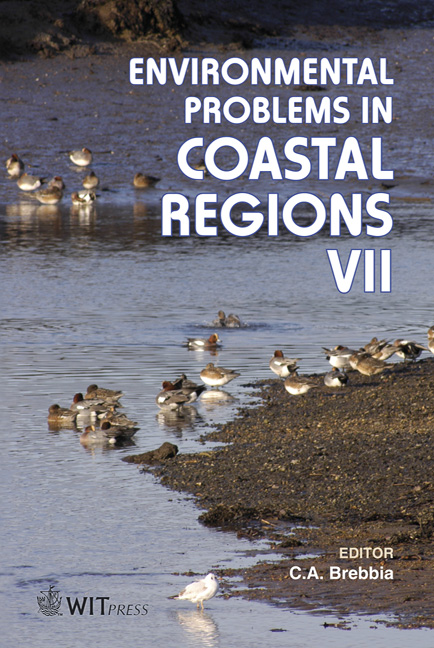The Flushing Of Pollution From Recreational Boating In Tidal Embayments With Application To Great Salt Pond On Block Island
Price
Free (open access)
Transaction
Volume
99
Pages
11
Page Range
3 - 13
Published
2008
Size
713 kb
Paper DOI
10.2495/CENV080011
Copyright
WIT Press
Author(s)
S. Mecca, W. Brown & R. Barber
Abstract
Pollution loading from recreational boating has been gleaned from seasonal boat count data, published results of pollutant releases from marine engines, and boat type and size distributions from marine association data. These loading functions have then been used in the single-basin MSB model of pollution-flushing, a systems-dynamic model written in Stella (Stella is a product of ISEE Systems, Inc., formerly High Performance Systems of Hanover, New Hampshire, USA), which has been validated in tank tests and in a specific application to Great Salt Pond on Block Island. The results of the present study allow the concentration of various aqueous pollutants associated with the propulsion component of recreational boating to be computed in well-mixed tidal embayments. Keywords: tidal prism, pollution flushing, tidal embayment, recreational boating pollution, Great Salt Pond Block Island. 1 Introduction While coastal embayments are likely to benefit from ‘no discharge’ regulations, recreational boating adds a number of pollutants from marine engine use to basins that serve as harbors for these vessels. The MSB single-embayment model [1] offers a graphical and numerical representation of the process of pollution flushing from well-mixed tidal embayments. The model, which is written in Stella (Stella is a product of ISEE Systems, Inc., formerly High Performance
Keywords
tidal prism, pollution flushing, tidal embayment, recreational boating pollution, Great Salt Pond Block Island.





